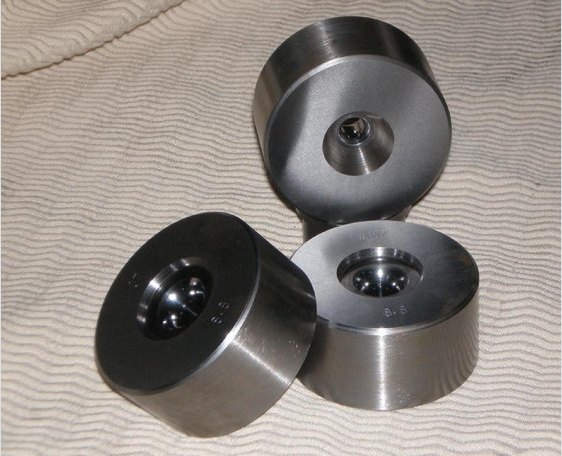

What is the range of process performance in forging tungsten carbide die tools?
①Forging. The forging performance of GCr15 carbide is better, and the forging temperature range of tungsten carbide die tools is wide. The general forging process specification is: heating 1050~1100℃, initial forging temperature 1020~1080℃, final forging temperature 850℃, air cooling after forging. The structure after forging should be a thin sheet-like spheroid, which can be spheroidized and annealed without normalizing.
Tungsten carbide die tools
② Normalizing. The normalizing heating temperature of GCr15 carbide is generally 900~920℃, and the cooling rate cannot be less than 40~50℃/min. Small die tools can be cooled in still air; larger die tools can be cooled by blowing or spray cooling; large die tools with a diameter of more than 200mm can be cooled in hot oil, and air-cooled when the surface temperature is about 200°C. The latter cooling method of tungsten carbide mold has relatively large internal stress and is easy to crack, so spheroidizing annealing should be carried out immediately or a stress-relieving annealing process should be added.
③Spheroidizing annealing. The spheroidizing annealing process specification of GCr15 carbide is generally: the heating temperature of the tungsten carbide mold is 770~790℃, the holding time is 2~4h, the isothermal temperature is 690~720℃, and the isothermal time is 4~6h. After annealing, the structure is fine and uniform spherical pearlite with a hardness of 217~255HBS, which has good cutting performance. GCr15 carbide has good hardenability (the critical hardening diameter of oil quenching is 25mm), and the depth of the hardened layer obtained in the case of oil quenching is similar to that of carbon tool carbide water quenching.

Hot information

